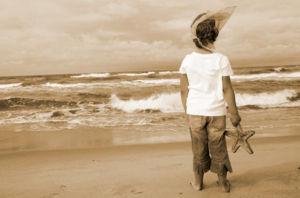 One morning while reading the news on my way to work, I felt overwhelmed by the suffering of the world. I arrived at my stop, exited the L, and walked the streets of Chicago and saw suffering all around me: the homeless man with the deep, open gash in his leg; the elderly woman limping slowly along the sidewalk; the child crying and clinging to her mother’s leg; the frowns on faces of my fellow walkers – stressed about the day.
One morning while reading the news on my way to work, I felt overwhelmed by the suffering of the world. I arrived at my stop, exited the L, and walked the streets of Chicago and saw suffering all around me: the homeless man with the deep, open gash in his leg; the elderly woman limping slowly along the sidewalk; the child crying and clinging to her mother’s leg; the frowns on faces of my fellow walkers – stressed about the day.
Sometimes I feel the suffering of the world so fully that it stops me in my tracks. As a Reiki practitioner, one of the things I hope to do is help people decrease their own suffering. However, sometimes it feels impossible.
I help one person only to turn around and hear the story of another person’s suffering, and another, and another.
I feel it and it nearly overwhelms me.
How can this be? I’m a Reiki Master of Masters. I help people. I offer up the universe’s energy through my hands and I can even do this without directly touching someone. So, how can it be that I feel so overwhelmed and helpless?
I really did not know how to address this or what would be helpful and then, this thought came to mind: “You made a difference for this one and that one. It’s the most you can do. You must keep doing it and you must include yourself in this healing.”
And then, of course, I remembered the story about the starfish, which I’ll share with you here:
“Once upon a time, there was a wise man who used to go to the ocean to do his writing. He had a habit of walking on the beach before he began his work.
One day, as he was walking along the shore, he looked down the beach and saw a human figure moving like a dancer. He smiled to himself at the thought of someone who would dance to the day, and so, he walked faster to catch up.
As he got closer, he noticed that the figure was that of a young man, and that what he was doing was not dancing at all. The young man was reaching down to the shore, picking up small objects, and throwing them into the ocean.
He came closer still and called out “Good morning! May I ask what it is that you are doing?”
The young man paused, looked up, and replied “Throwing starfish into the ocean.”
“I must ask, then, why are you throwing starfish into the ocean?” asked the somewhat startled wise man.
To this, the young man replied, “The sun is up and the tide is going out. If I don’t throw them in, they’ll die.”
Upon hearing this, the wise man commented, “But, young man, do you not realize that there are miles and miles of beach and there are starfish all along every mile? You can’t possibly make a difference!”
At this, the young man bent down, picked up yet another starfish, and threw it into the ocean. As it met the water, he said,
“It made a difference for that one.”
― Loren Eiseley
Go out there today and make a difference, even if it’s just for one person. It matters.

 This article also appears on
This article also appears on 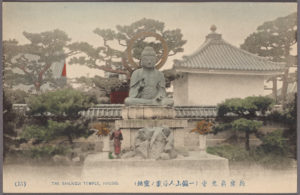
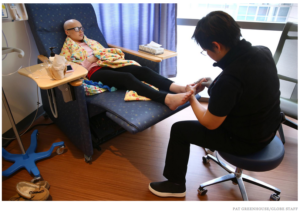
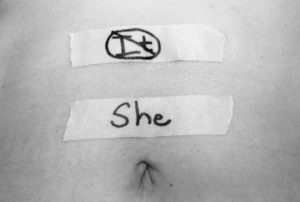
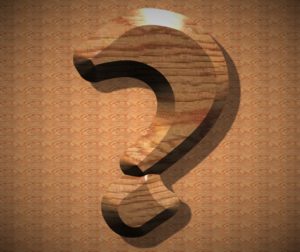 “Uncertainty” is a word that keeps coming up in various contexts for me lately and it seems so appropriate in the face of acts of violence that surround us. As we try to believe that we are safe in this world, as we try to convince our children of this, we are faced with the fact that the future is uncertain. Tied in with that uncertainty is the reality that we lack control over so much of our lives.
“Uncertainty” is a word that keeps coming up in various contexts for me lately and it seems so appropriate in the face of acts of violence that surround us. As we try to believe that we are safe in this world, as we try to convince our children of this, we are faced with the fact that the future is uncertain. Tied in with that uncertainty is the reality that we lack control over so much of our lives. Several years ago I was traveling on business from Los Angeles to Tucson. I had a flight to catch from LA and was getting ready to leave my company’s office in the afternoon, drive to LAX, return the rental car, and fly out. One of the managers on my team was encouraging me to leave so I could make it there on time and get ahead of the afternoon rush hour traffic. I told her I was getting ready and would leave soon. She looked at me incredulously and said, “You’re not worried, are you?” To which I replied, “Worry, don’t worry. The outcome is the same.”
Several years ago I was traveling on business from Los Angeles to Tucson. I had a flight to catch from LA and was getting ready to leave my company’s office in the afternoon, drive to LAX, return the rental car, and fly out. One of the managers on my team was encouraging me to leave so I could make it there on time and get ahead of the afternoon rush hour traffic. I told her I was getting ready and would leave soon. She looked at me incredulously and said, “You’re not worried, are you?” To which I replied, “Worry, don’t worry. The outcome is the same.” I did it! Yes! Three cheers! High-fives! And all that! I completed my first half marathon this month! I also did it in a respectable finishing time and was still able to hike around the park in the afternoon and walk down the stairs at home the next day!
I did it! Yes! Three cheers! High-fives! And all that! I completed my first half marathon this month! I also did it in a respectable finishing time and was still able to hike around the park in the afternoon and walk down the stairs at home the next day!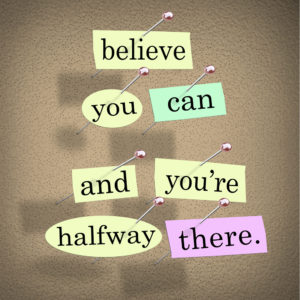 Just a short and sweet post on leading with your heart’s desire and a can-do attitude.
Just a short and sweet post on leading with your heart’s desire and a can-do attitude. A change in a personal habit has allowed me more time for reading. I’m really enjoying this change even if some of the books I choose to read are not a “walk in the park.”
A change in a personal habit has allowed me more time for reading. I’m really enjoying this change even if some of the books I choose to read are not a “walk in the park.”